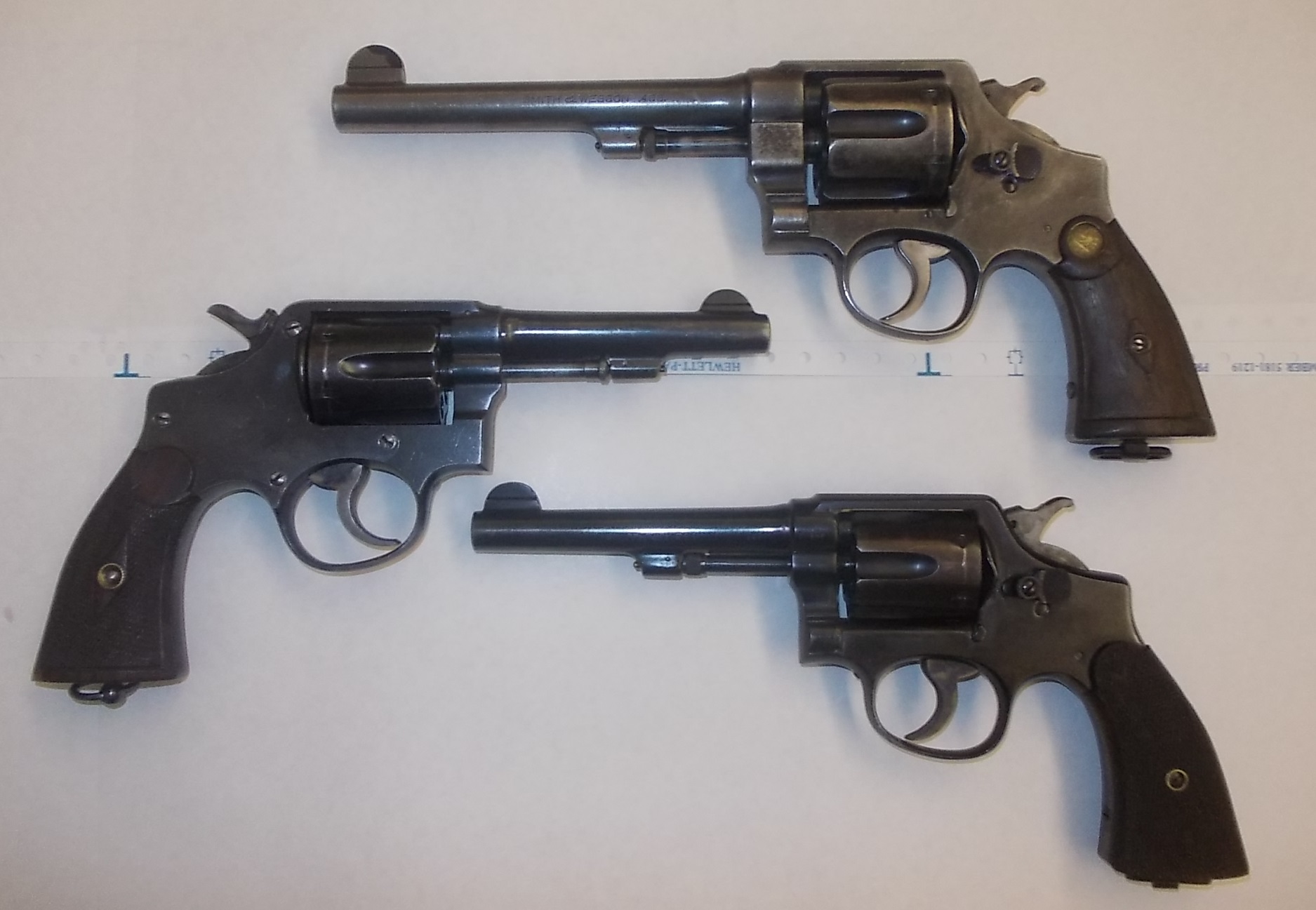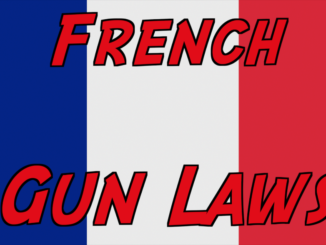After the adoption of the MAT 49 as the standard French military submachine gun, elements of the French security services also adopted it to replace the 7.65mm MAS 38 submachine guns. These included the Paris Police, who developed a special variation of the MAT 49 for their use, designated the MAT 49-54. This model had a fixed wooden stock, a long (365mm / 14.4″) barrel, and a new trigger mechanism with a semiauto trigger and a second full auto trigger with a special block to prevent unintentional use. Unlike the police model MAS 38 SMGs (which were rebuilt from standard guns), the MAT 1954 was produced as a special run by the Tulle arsenal from scratch. Only a few hundred were made.
Thanks to the French Ministry of the Interior for allowing me access to this example to show you!




In short, they took the MAT 49 and turned it into an ersatz M1921 Thompson in 9 x 19mm. Making it less of a sub-machine gun and more of a selective-fire carbine.
Considering that Thompsons ranging from M1921 on through to the M1A1 model formed the bulk of U.S. made SMGs delivered to the Resistance, this is probably not surprising.
While the majority of SMGs supplied to the Resistance were British Stens (MK II and MK III), the TSMG was the primary U.S. contribution. Contrary to myth, the M3 Grease Gun was only supplied in small numbers due to its only reaching IOC with U.S. forces in mid-1944, with the majority ending up in the Pacific Theater. Less than 200 M3s are verified as having been delivered to the FFI, none earlier than a month before D-Day, June 6 1944.
With that in mind, the overall resemblance between the M3 and the later standard-model MAT 49 is actually quite interesting.
cheers
eon
“(…)With that in mind, the overall resemblance between the M3 and the later standard-model MAT 49 is actually quite interesting.(…)”
Why? I would say this weapon show typical solutions for immediate post-war-era sub-machine guns like production via stamping and only full-auto. Only standing-out feature is folding magazine well, so I woder if it was carried over from Pistolet Mitrailleur Modèle 1939
https://guns.fandom.com/wiki/Petter_Mle_1939
or other weapon?
An open-bolt carbine for “precise single shot” seems a serious compromise.
It’s interesting to note that another standard Gendarmerie’ weapon was the M1 Carbine, which was often equipped with a 4X telescopic sight for very precise shooting.
In the late 1970s and early 1980s, the M1s were superseded by Ruger Mini-14s in .223, also telescopic sighted.
The Carbines were apparently perceived as being less penetrative than a full-power rifle, which would be preferable for urban police use, while being more accurate than any blowback pistol-caliber weapon.
As for the Mini-14, it was apparently adopted simply due to being about the size and weight of the Carbine, and operating much like it. So retraining officers used to the Carbine was simplified, while the force gained the advantage of a modern weapon firing a more up-to-date cartridge.
cheers
eon
The full lenght wooden stocked Mini-14 was also seen as more apt to crowd control operations than the shorty FAMAS.
Standard MAT49 was even worse in this aspect, so the elongated MAT49-56 made sense for this requirement.
I take it you are referring to butt stroking rioters? Not something you can do with a sliding wire stock.
Even in those days butt stroking was not really an acceptable technique for riot control. The rifle is first a psychological tool. Next holding it horizontally with both hands is quite efficient at pushing people away.
Looking at recent protests in France, I can’t help thinking flashball launcher are less effective at calming down rioters. They are often counterproductive when considering injuries caused by no so well trained users.
Phil:
I cannot be 100% sure now, but I seem to remember seeing footage once of the CRS advancing on a crowd. They were armed with MAS36 rifles (unloaded, I hope), with the rifles reversed at shoulder height, so the butts were facing the crowd, obviously intending to use them as clubs if necessary. An intimidating sight, to be sure.
The French have always liked a riot, and the state has accordingly developed some pretty rough tactics for dealing with it. I agree with you that these flashball weapons seem like seriously unpleasant things.
“Precise single shots” are relative. What were the alternatives in 1954? Did the MAT-49/54 deliver more precision than the alternatives?
Bear in mind that American police during the same period were usually limited to their service revolver. Some departments held submachine guns, carbines, rifles, or riot shotguns–but those were special weapons and not usually available to the patrol officer. Information on the used of these special weapons is scarce and unreliable because police agencies often lacked an SOP and the weapons were issued or authorized on an ad-hoc basis.
How was the MAT-49/54 used? Was it carried on foot patrol? How was it stowed during motorized patrols? How much duty ammo was carried for the MAT-49/54 and how was it carried? What was training like and was there a formal qualification standard in 1954 or 1955?
Interesting “sub-carbine” and select-fire option. I’d think I would have more confidence in one of those things… Or an M1 carbine… Than the UMP, but doubtlessly it weighs a ton! I might add further that a number of U.S. police departments that used the MP5 had a “lock-out” so that it was basically a self-loading-only sub-carbine. Full auto could be done, but it took very deliberate manipulation of the selector.
Also, as people probably know, in the late 20th century the U.S. FBI had a “SBR” version of the MP5 with the SMG-length barrel, but a fixed stock that could be used by special agents. In the UK, there was a time when the armed response police duo had Glock pistols and an MP5 SF semi-auto-only sub-carbine.
Last, while open bolt semi-auto rifles or carbines are “strengverboten” in the U.S.A., apart from antique Model 55 Winchester single-shot open-bolt .22s, The Swedish police also for a time had a semi-auto slam-fired m/45 Carl Gustaf 9 mm. That it was replaced by the closed bolt MP5–like everyone else–should surprise no one I guess.
A close friends father was in Vietnam in the very early days before the US was openly( officially) there. He acquired a MAT49 during a op. from some VIP Who was no longer going to need it. He said it was a great subgun and carried it while he was there. I never met him but heard very entertaining stories from his time over there.
The Mini14 used by French CRS (not quite SWAT, officially anti-riot and anti-insurrection police) was the select-fire AC556 in the standard wood stock, with the (especially for police) questionable 3-round burst feature and the even less useful full-auto option.
CRS were created at the end of WW2. The idea seemingly being that they would help put down any attempted revolution by the then well-armed and organised communist wing of the resistance.
The French Communists accepted all weapons and etc. given them by SOE (the OSS never did any “business” with them), and then basically sat on their hands and did nothing for the rest of the war.
Unless you count the number of non-Red Resistance cells they ratted out to the Nazis in Paris, Marseilles, and etc.
Like the Communists in Greece (ELAS), they were going to bide their time until after liberation and then try to seize control in an armed coup. Unlike ELAS, they had de Gaulle to reckon with, and he was in no mood for such nonsense.
Yes, it got ugly. No, it rarely gets mentioned in “official” histories.
cheers
eon
It’s pretty “sad” that the French Communists had such skewed priorities. If they had put their “revolutionary aspirations” aside and remembered that a revolution can’t happen without a country to revolutionize (as hypothetically the Nazis would eventually kill them off for not embracing Nazism), they’d have been seen in a better light and perhaps treated better later. By being borderline “collaborators” the French Communist cells had effectively signed their own death warrants. I could be wrong.
They were subordinate to Moscow’s voice.
As long as Moscow ordered them to stay neutral, they did.
My previous message was simplistic.
I should nuance : the one who followed the Party order had to refrain themselves. The other ones took action before the official “green light”.
Small point, Ian, but when you’re showing us a black gun in front of your black shirt, it makes it difficult for us to see the finer details. You gave us a good look at the trigger later, so no worries.
I think the Beretta M12s are still current. I saw many of them being carried by French police after the Bataclan massacre, as well as Ruger Mini 14s. The MAT49 does seem to have disappeared, however.
Apparently, the M12 is slated for replacement by the HK UMP in 9mm. Doubtless the M12 will continue for quite some time. The AMD Ruger Mini-14 is still photographed from time to time.
I’ve got a MAS Mle. 1936 that was made in 1946 and put away in Clermont Ferand in 1976.
Similarly, the quantities of HK rifles acquired by the Armée de Terre indicate the FAMAS F1–rebuilt by Beretta with the top hand-grip/sight mounting removed–will continue in service for quite some time.